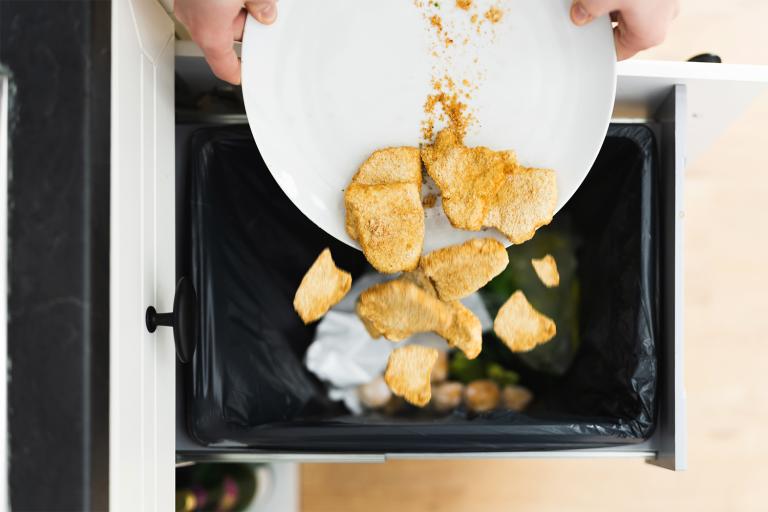Food is wasted in many ways, such as buying too much, making too much, and letting fresh food go bad.
By reducing food waste, we save money, reduce methane emissions coming from rotting food in landfills, and conserve resources that go into food production.
How You Can Reduce Food Waste
-
Eat What You Already Have
Shop in your home before you head to the grocery store! Check inside your refrigerator and pantry and see if you can eat more of the food you already have.
-
Store Fresh Food Properly
Research how to store different types of fruits and veggies so they stay fresher longer. For example, bananas and tomatoes emit natural gases that make nearby produce ripen faster. Store these items separately.
-
Make a Meal Plan
Plan your weekly meals and make a list of exactly what you need at the store.
-
Freeze for Long-Term Storage
Freeze extra food, such as bread, sliced fruit, or meats, to extend shelf life.
-
Start Composting
Compost leftover fruit and vegetable waste.
-
Donate Canned Goods
Donate extra canned goods to a food pantry or food drive.
-
Check the Label for Dates
According to the United States Department of Agriculture, different food product labels help shoppers determine quality.
- Best if Used By/Before Date
- This indicates when a product will be of best flavor or quality. It is not a purchase or safety date.
- Sell-By Date
- This date tells the store how long to display the product for sale.
- “Use-By” Date
- This is the last date recommended for the use of the product while at peak quality.

